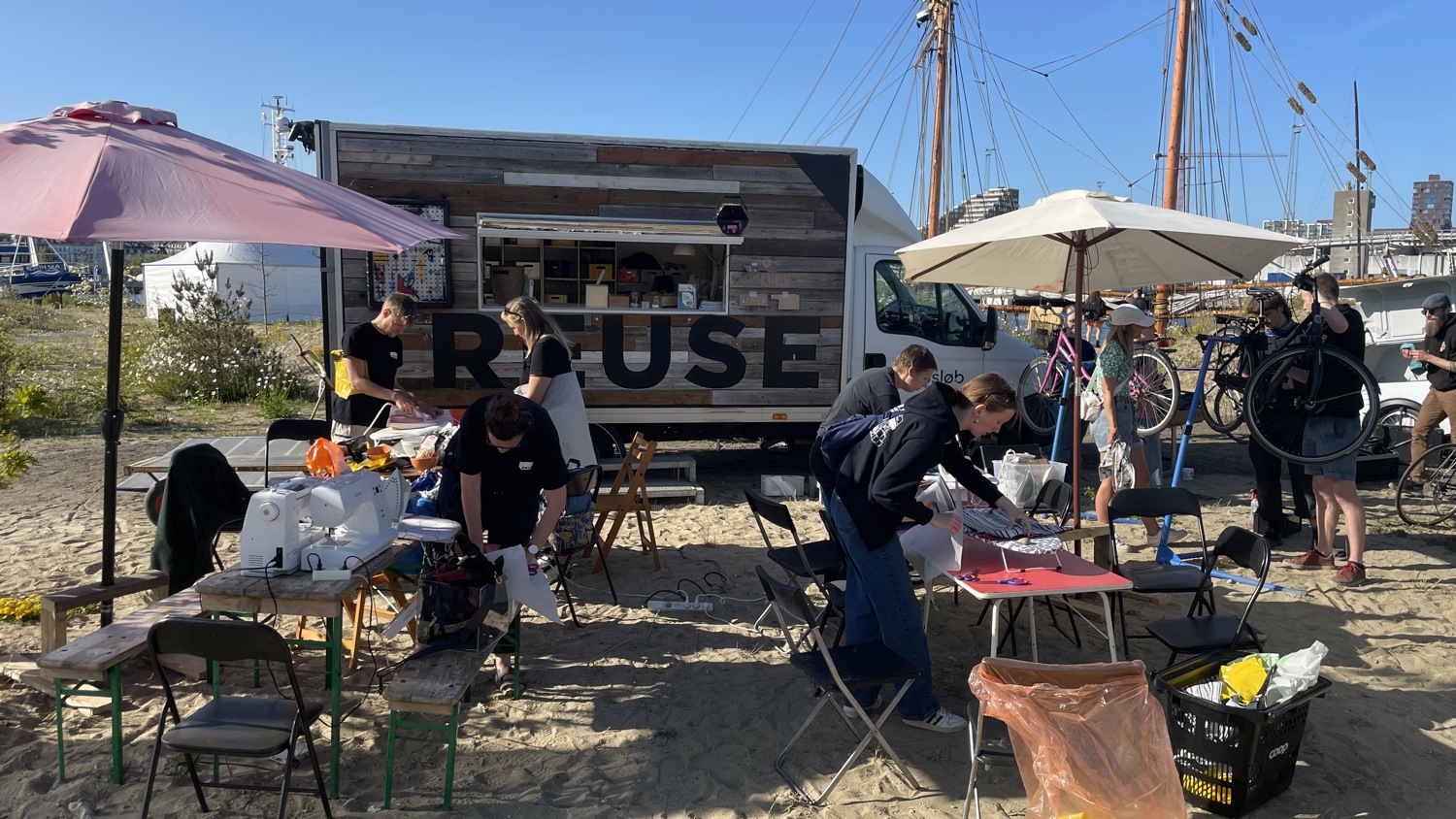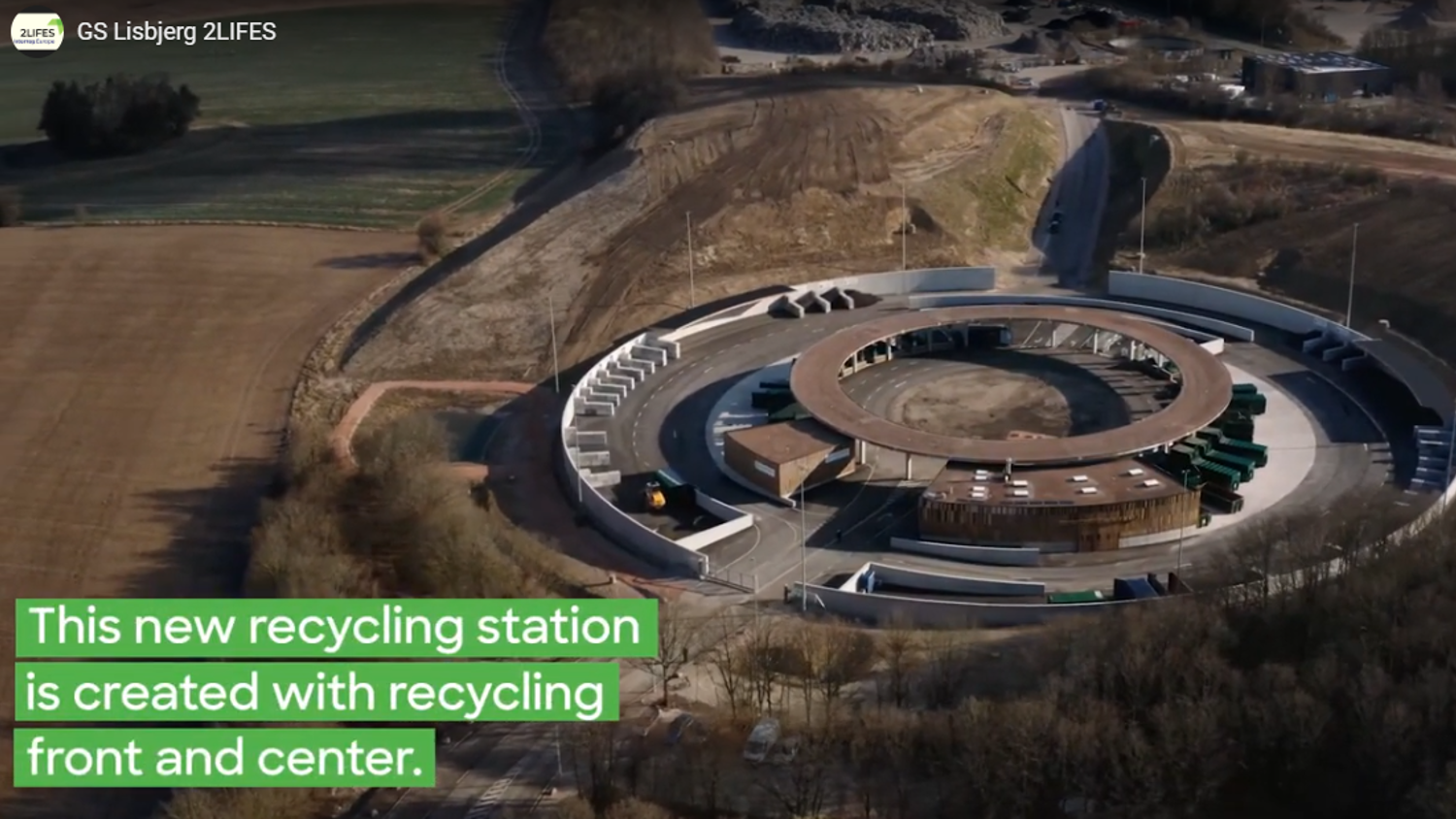
How Aarhus and Copenhagen are using repair and reuse to cut waste and reshape public services
In Aarhus and Copenhagen, this is put into action by two Interreg projects, 2LIFES and CEO. With inspiration and input from their partners abroad, they are reimagining repair, reuse, and procurement. In turn, they share their local experiences and experiments with others and shape circular solutions in Europe.
Aarhus and 2LIFES: a boost to reuse
When Kredsløb, the public utility company in Aarhus, joined the Interreg Europe project 2LIFES, they had one main goal: to improve the city’s waste plan by accelerating the innovations in the reuse field.
They knew they were not starting from scratch. But they also knew that despite Denmark's top ranking in the 2022 Environmental Performance Index, it still generated more municipal waste than most other European countries. If Aarhus wanted to cut waste volumes, they would need new ideas. Those ideas came, in part, from Interreg Europe project partners.
Through 2LIFES, Kredsløb visited partner cities in Spain and Italy. They saw successful examples of reuse, like construction salvage stations. Construction and demolition waste accounts for more than a third of all waste generated in the EU. So, finding new ways to reuse or recycle construction materials has a great potential to contribute to the overall goal of keeping as much of previously used materials in European economy as possible.
Inspired by the Spanish and Italian good practices, Kredsløb set aside a special area for construction material at their existing recycling centres in the Aarhus region. These are bring-and-take areas where people and companies can leave reusable construction material or pick up for free what was deposed for reuse by someone else. Six such recycling centres exist in the region now.

Kredsløb went further with their reuse innovations. Borrowing from a Hungarian idea of a mobile library, Kredsløb developed a mobile repair café. A repurposed van stocked with tools and staffed by volunteers travelled to markets and festivals, offering free repairs on everything from broken toasters to torn backpacks.
The van with the mobile repair café was very popular and became a symbol of reuse and repair in the region. The national association of repair cafés was set up in Denmark and took the repair idea further. It spread the repair cafés across the whole country. 80% of Danish municipalities now have repair cafés in various formats, mobile or stationary.
Copenhagen and CEO: putting reuse to work
In the capital, a different kind of reuse story is unfolding. A spacious municipal warehouse is not filled with new furniture, but with chairs, tables, and shelving units reclaimed from the city offices.
This warehouse is a pilot developed through the Interreg North Sea CEO project. It opened in January 2023 with the idea of creating a central place to store, sort, and redistribute used municipal furniture. Instead of being sent to landfill or incineration, unwanted desks and drawers now find new homes, often just across town.
On the very first day, the warehouse moved enough items to equal DKK 1 million (EUR 134 000) in avoided purchases. By the end of the first year, turnover had reached nearly DKK 16 million (EUR 2.1 million), and the reuse had saved an estimated 320 tons of CO₂.
But numbers only tell part of the story. ‘The amount of used inventory surprised me,’ says Kim Andersen, the warehouse coordinator. ‘I worked as a mover for the municipality for years, so I knew there was a lot. But still, the volume was more than expected.’
Running the warehouse meant building new workflows from scratch. ‘Every day is different. No two items are the same. We had to learn how to catalogue things, plan for fluctuations, and adjust our IT systems to keep up.’
The project’s success has drawn interest from across Denmark, and beyond. Visitors have come from ministries, universities, other municipalities, and even the city of Oslo. Some are considering regional partnerships; others want to copy the model outright.
‘There’s a growing interest in this kind of solutions,’ says Ditte Ibfelt Andersen, one of the project leaders. ‘Especially as public institutions face stricter climate targets. Reuse is an easy win, and once you have the system in place, it becomes second nature.’
But building the system was not easy. Getting seven departments to share their furniture stock was a major cultural hurdle. Budget silos, logistical barriers, and ingrained habits made cooperation difficult at first. ‘We didn’t have a baseline,’ recalls Sine Stenbek Andersen, who is running the project with Ditte. ‘We didn’t know how much furniture could be reused, or how the departments would respond.’
The team spent months building trust, mapping flows, and working out the business case. In the end, it worked, and not just financially. ‘Seeing items get used again, and seeing interest from other cities, it’s motivating,’ says Sine. ‘It feels like we’re doing something that matters.’
Scaling circularity
Although rooted in local needs, the CEO and 2LIFES projects were shaped from the start by European cooperation. They both draw on good practices and insights shared by partners from other countries, adapting them to Danish contexts. Then they shared their results back in their network. That’s the core logic of Interreg: ideas and inspiration travel, so solutions don’t have to start from zero and reinvent the wheel.
In the case of CEO, the project is part of a wider network of pilot initiatives across the North Sea Region, all exploring how reuse can become standard practice in public procurement. In 2LIFES, Aarhus worked with partners from six different countries to find the best solutions for reuse and shape their municipal plans, including targets to triple reuse in the coming years.
Both cities have found themselves, sometimes unexpectedly, becoming models for others. ‘Cooperation helped us skip the early trial-and-error,' says Ditte. 'Now, we are helping others do the same.’
Circularity, it turns out, is a two-way street. And when reuse is made visible, it becomes easier for people to take part, and for cities to make change.
Designing for the future
As Denmark continues to grapple with high waste volumes and climate challenges, the work in Aarhus and Copenhagen shows that change is possible, and already underway.
Even though reuse is more environmentally and socially friendly, waste management programmes often prioritise recycling to reuse. Territorial cooperation projects can work as an instrument to boost reuse through public policies. Reuse can promote not only environmental sustainability, but also employment and solidarity in communities in Europe.
Sometimes, it just takes a van, a warehouse, and the willingness to reuse what we already have. And when local action is backed by European cooperation, it can have an impact across Europe.
Featured hero photo: Mobile Repair Café in Aarhus. Photo by Kredsløb.


